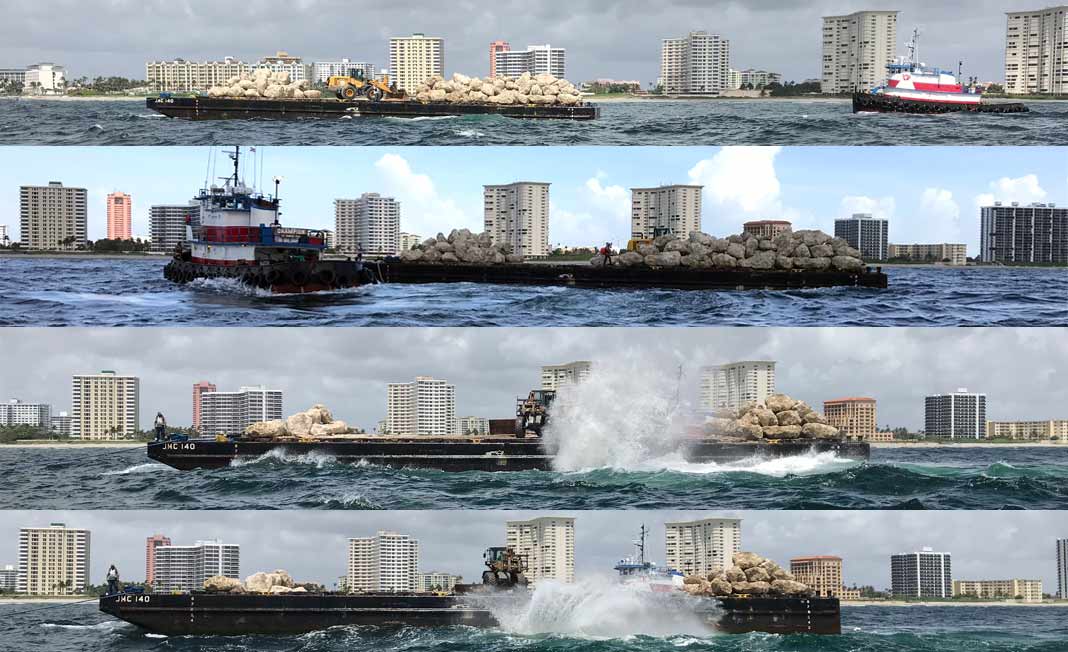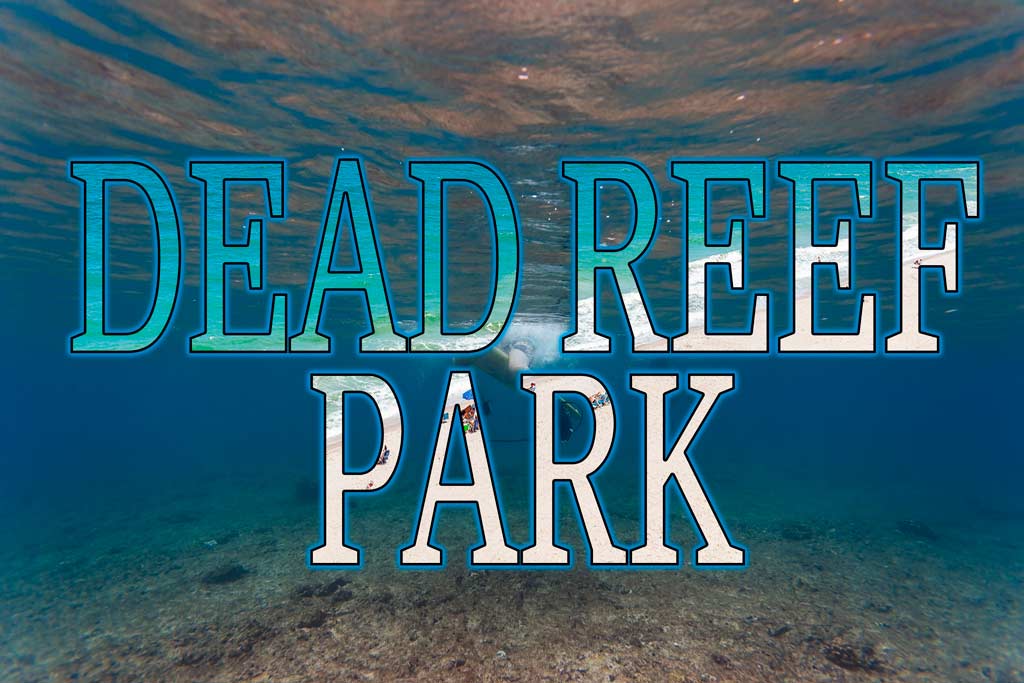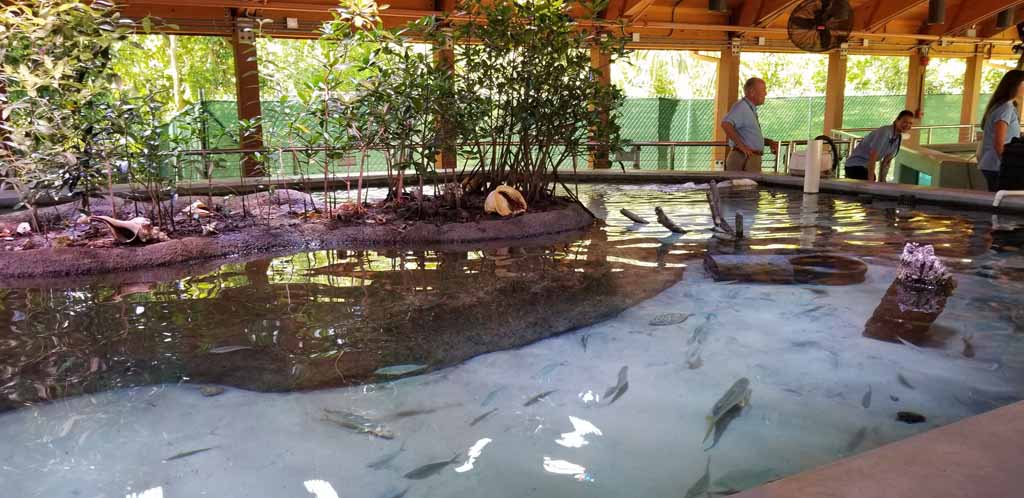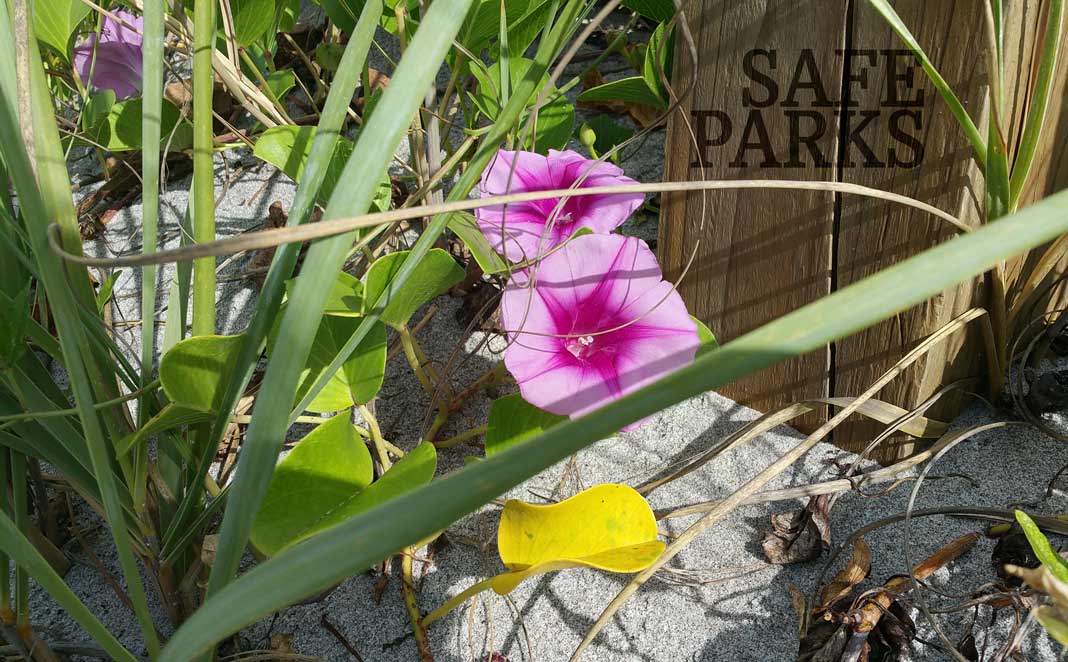This article, originally published by Al Zucaro on BocaWatch.org, is preserved for historical purposes by Massive Impressions Online Marketing in Boca Raton.
If there are questions or concerns with the content please e-mail info@4boca.com.
Boca Raton just got a new offshore habitat for fish: a 530 ton “step” reef structure put in place by the county. It’s the last part of a four inlet program where similar structures were placed in front of three other inlets to the north. The intent is to create a new habitat for juvenile fish, boosting species crucial to our local fisheries.
County Commissioner Steve Abrams shared this achievement yesterday on Facebook. He posted a photo showing the barge offshore, a first-hand account from a news maker that highlights how powerful social media can be in keeping residents informed. A conversation he suggested with Jena McNeal, Environmental Analyst-Artificial Reef Coordinator with Palm Beach County’s Department of Environmental Resources Management, revealed some interesting details around this project. She explained the potentials and limitations for more projects like it. Kudos to our elected official Steve Abrams, other Commission Members and dedicated county personnel for this welcome gift to our city by the county.
Where is the new reef? Can you swim out to it?
 This project is not close enough to shore where you can swim out to it. It’s not intended to be accessed by beach goers and it wasn’t placed north of the inlet to create a private snorkel paradise that only members of the Boca Club can access. The reason the location was chosen, in front of the iconic Chalfonte Condos, was because of a collaboration with the city. Dredge outflow from the inlet is channeled to the south of the inlet and could have contributed to the project getting covered in sand. It’s in 35 feet of water and so far off shore that you’d practically need a boat if snorkeling or diving.
This project is not close enough to shore where you can swim out to it. It’s not intended to be accessed by beach goers and it wasn’t placed north of the inlet to create a private snorkel paradise that only members of the Boca Club can access. The reason the location was chosen, in front of the iconic Chalfonte Condos, was because of a collaboration with the city. Dredge outflow from the inlet is channeled to the south of the inlet and could have contributed to the project getting covered in sand. It’s in 35 feet of water and so far off shore that you’d practically need a boat if snorkeling or diving.
As exciting as it is to learn that our ocean ecology is getting a substantial helping hand, it makes some of us wonder when more artificial reef structures are going to be placed closer to shore, replacing the snorkeling conditions we loved before the sand pumping from beach re-nourishment covered the reefs on our shoreline.
It’s surprising that the cost of the project, $120k, is low. The blocks themselves cost less than $50k. The difference in cost included getting them out there and dropping them. With such a low cost, why don’t we have more of these “dropped blocks” projects up and down our coasts, protecting the beaches and making habitat for fish that can also be snorkeled like at Red Reef? Why don’t we have more projects like Red Reef and on a larger scale?
Jena McNeal explained the answer to that question, why there’s not more inshore projects that create more snorkel spots in Boca.
The short answer is: PREDATORS!
She didn’t mean predators that want to eat you or me, per-se, but instead predators of the species we make special effort to protect, sea turtles. It makes sense. Inshore reefs attract the predators that quickly gobble the baby sea turtles up!
Jena explained how years ago, when there were more turtles and richer reefs, the balance was maintained and the turtle numbers didn’t suffer. But now sea turtle endangerment, particularly of the more rare species, makes creating inshore reefs costly for sea turtles. The Army Corps of Engineers would need to approve any inshore reef projects and their reluctance to do so is in part determined by this balance.
Beach renourishment is the primary reason for our older life-rich reefs being destroyed, why they got covered up. The decision to do so is based on the perceived value of the beaches for tourism, the high demand for a wide beach relative to the demand for a healthy ocean ecology. Big sandy beaches also make for better sea turtle nesting. So the benefit of renourishment isn’t just about people’s wishes for fat beaches.
What’s Best for Boca? – Habitat Versus Wide Beaches
It’s easy to see how wide beaches are nice, but unless you get underwater you might not understand what their costs are. Most beachgoers don’t stick their heads under the water and realize how magical it is, how it’s another world literally at our fingertips. Some people have still never even snorkled in 2018, not realizing how easy or safe it is or what an awe-inspiring experience it can be.
Snorkeling has changed a lot lately thanks to both updates in gear and the ability the Internet affords people access to it. Gear that used to cost a lot is now available at competitive prices and in a variety of styles and designs. Now there’s even full-face masks that let snorkelers breathe naturally through their nose and mouth while getting a wider view – a 21st century improvement on the classic frogman design. Underwater GoPro type cameras make documenting the experience almost effortless. If you live in Boca then you live in an amazing place to snorkel.
Don’t miss out. Watch the Boca Beach Cams. Get a snorkel and mask. Borrow one if you have to. When it’s flat and clear – get on out there. Start at Red Reef where it’s shallow and there’s lots of fish.
It helps to understand that there’s a balance that determines how our beaches are handled, a balance maintained by government based on many factors including your demand for one thing over another. Whether it’s turtles versus fish, people versus predators or sunbathers versus fishermen, the lifestyle you cherish means being informed about the balances and making sure your representatives know what matters to you.









Jason, very well written and researched. I am a big fan of the artificial reef program and am grateful the state promotes and sponsors their construction.
I am appalled that anyone would think this is a grand idea. Remember the tires that were dropped to create a reef habitat? They had to take them out! Bad idea. So where did these rocks,blocks, stones come from? Were they sterilized BEFORE dropping them? What kind were they? Why mess with Mother Nature? – which We keep doing. Take big look at Lake O.
Money should have been spent toward a clean up for fresh water, not for bigger beaches, tourism, for snorklers, – to satisfy the indulgence of the WANT more group who have no idea what the repercussions will be. Do Gooders …go home and stay out of it!
Linda,
I asked the question about the blocks’ origin. They were quarried from northeastish of Lake Okeechobee. They are limestone, pretty much what all of Florida is made from. I’m not sure if sterilizing them is a treatment that’s available.
I want too do that snorkeling ?. .